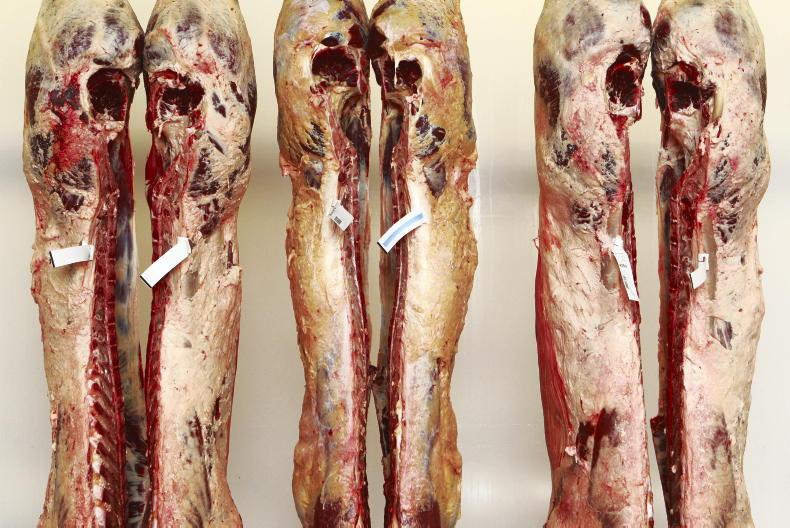There’s a lot more bite in the beef trade this week, with an upward swing in bullock and heifer quotes.
Most factories have moved bullock quotes to €3.95/kg to €4.00/kg, with heifers now at €4.00/kg to €4.10/kg base price before any in-spec bonus, breed bonus or other bonuses are paid.
That’s up 5c/kg to 15c/kg on last week’s quotes.
Flat deals are also coming into play more as factories try to sway supplies into their factory lairage.
Bull quotes are also up, with as far as €4.10/kg being paid for U grading bulls this week. Under-16-month bulls are up to €4/kg base price.
P grading cows are being quoted at €3.15/kg to €3.20/kg in some factories, with more going if there are numbers of well-fleshed cows involved.
O grading cows are on €3.25/kg to €3.35/kg for good O grades. R grades are being quoted between €3.50/kg and €3.65/kg.
The cow trade in marts has also taken a lift, with €2/kg to €2.20/kg being paid for well-fleshed suckler cows.
A number of NI wholesalers are still driving the trade for good-quality cows.
The reopening of pubs and outdoor dining in the UK has meant customers are back purchasing and with supply chains currently empty, that means Irish factories have had to ramp up production this week to fill some big orders.
Some factories who had been killing three or four days weekly have moved this week to five-day kills such is the demand.
Last week’s kill came in at 28,780 head, excluding veal slaughtering, a drop of 1,743 head on the previous week’s kill.
Last week’s bank holiday will have reduced the kill. However, finished cattle remain very tight in supply, with factory agents reporting low levels of cattle coming on stream for the next two months.
The ever-decreasing young bull kill will also contribute to tighter supplies in the coming months.
Young bulls usually propped up supply in May and June when under-16-month spring born bulls would have been slaughtered.
This bridged the gap between shed cattle and grass cattle for factories. This year, we have seen another huge drop in bull beef slaughtering. So far this year, there have been 17,165 fewer bulls killed in 2021 compared with the same period in 2020.
If you look at the short-term outlook for the beef trade, it looks positive. The UK has gotten its vaccination strategy right and is opening up accordingly.
Once normality resumes, this will likely see a surge in spending, eating out, domestic holidays, etc.
This is all good news for the beef trade and with the British price at €5/kg, there is huge scope for further improvement to the Irish beef price in the coming weeks.
Across Europe, the COVID story isn’t as positive. However, there could be a silver lining in this for Irish beef.
EU imports of beef were down 20% in 2020 due to widespread closures across the food service industry.
This had the knock-on effect of meat traders being very reluctant to sign contracts for South American imports of beef before more detail is known around Europe’s COVID exit plan. Around the world, beef prices are rising, predominantly being driven by Chinese demand.
IFA livestock chair Brendan Golden said: “The reopening of the food service sector and extremely tight supplies of finished cattle, both in the UK and Ireland, is driving the trade.”
Last week, across all steers in NI, U3 steers averaged 390.3p/kg (€4.78/kg). The average price paid for heifers was 378.66p/kg (€4.74/kg), with U3 grades at 389.8p/kg (€4.78/kg). Larger finishers have broken the £4/kg (€4.91/kg) mark for U grading animals.






 This is a subscriber-only article
This is a subscriber-only article











SHARING OPTIONS: